I've created a Renderer in Resource Editor with three labels(Icon,Destination,lblDate).
And used it in the list with Listmodel event in StateMachine.java
cmp.setModel(new DefaultListModel(payments));
cmp.setRenderer(new DefaultListCellRenderer(false) {
public Component getCellRendererComponent(Component list, Object model, Object value, int index, boolean isSelected) {
if(value instanceof Payment) {
Payment r = (Payment)value;
super.getCellRendererComponent(list, model, r.getPhoneNumber(), index, isSelected);
setText( r.toString());
return this;
}
return super.getCellRendererComponent(list, model, value, index, isSelected);
}
});
In this code I've could only change the Destination label of renderer
setText( r.toString());
but how to use other labels for example lblDate? How to set them values?
